Few drivers in short course off-road racing can boast a resume with close to as many wins and championships as Johnny Greaves. The Wisconsin native has won everything there is to win at the highest level of the sport, multiple times—more than 30 victories at Crandon and championships across a number of sanctioning bodies are a testament to that. In recent years, he’s also gotten to share the track with his son CJ, as the “G Team” continues to add to the trophy collection with success in a new generation.
We caught up with Johnny to talk about his favorite successes over an illustrious career, building both a family race team and a sanctioning body for side-by-side racing, and what he’s most excited about for the future:
First things first: every great career has to start somewhere, and like so many racers, yours started on two wheels. What got you started racing motorcycles, and then what inspired you to make the switch to four wheels?
My dad always had me around motorcycles, he was kind of a motorcycle guy, so we basically grew up with 80 enduros and all that stuff in the backyard. We had land, and what’s the first thing kids do with their motorcycles—make a racetrack. We got into making jumps and all that fun stuff.
But I didn’t actually race until I was 10 or 12, I think. I got an opportunity to do that, and I think I got second in my first-ever race on a Yamaha 80. We started really getting into that—I did that all through high school, and then right out of high school, I decided to try the pro ranks a little bit. That didn’t go too bad. The 125 Supercross was just starting up, where that was part of the series and kind of new, so I did some of those, and I did some of the local nationals like RedBud and Millville, and a few others.
Unfortunately, I always had to be back on Monday, work all week, and try to make it to the next race. So it never became a whole lot for me. I think there were opportunities there, but I couldn’t put it all together. But we had some good runs.
From there, I heard about this Crandon race—I don’t know what year it was, probably 1984ish, maybe 1985?—but this Crandon off-road race that I had never been to before, and there was a motorcycle race in the morning. So I went there, did that, and won basically every motorcycle class they had on one bike. I just kept changing the gearing in the 125, 250, and Open class, and won them all.
I did that for a few years, but one day after the dirtbike race, I was talking to a guy who had a 1600 Buggy for sale. Next thing you know, I traded the dirtbike for that, and things took off from there, I guess!
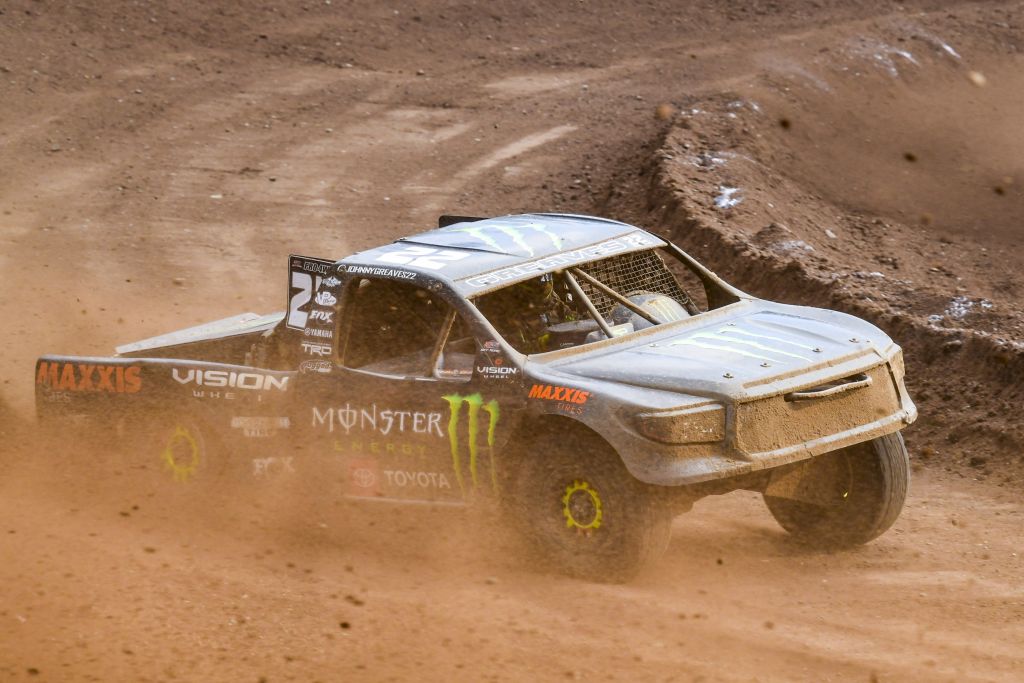
Photo credit: Mike Roth
The chase was on from there, and off-road fans have been watching you go to battle for decades now, winning just about everything there is to win at the highest levels of the sport. Reducing all those accomplishments to just a couple isn’t easy by any means, but have any wins in particular really stood out among the rest?
Obviously, the early years in Pro Lite, we had some really good years where we won almost every single race. I think there was one year where we ran 18 separate races over nine weekends, and I won 17 out of 18 of them. That was pretty special, and probably what really got my career started with Toyota and some of the major tire sponsors. Back then, we had the Potawatomi Indian tribe backing us. That’s what jump-started my career, so those are all really memorable years.
Since then, in Pro 4… I didn’t spend much time in Pro 2, I only spent one year and won one race. We kind of just struggled figuring out our truck that year. So we went straight to Pro 4, and won a bunch of championships there. But probably the best and most memorable races were when CJ got into Pro 2, and we could run the Cup races together. We had two or three times where we crossed the finish line first and second. I think there were two races where we went across there side-by-side. Those were really special, because that’s something you dream about, racing side-by-side with your kid.
You mention racing with your son CJ, and we’ve seen the two of you team up in Pro 4 for quite a while. Your teammate list reads like a who’s who of the sport over the past 20 years, but what’s the most special part about getting to run with him at this stage of your career?
First and foremost, just being able to see your son grow up alongside you and basically take over your shoes, that’s every father’s dream at some point. It’s super gratifying. When (CJ) was little, he grew up around the sport, around everything, and figured out how to do a lot of things differently than I did. When we thought he wasn’t paying attention, just out playing with the kids, he could come back and tell us everything that happened, who took out who, whose truck wasn’t set up right, and what they needed to change. It was amazing that he paid attention that close.
So when it came time for him to get behind the wheel, it was actually really easy. We took him out, taught him the basics about the truck, and as far as the driving, he was winning races in buggies and Pro Lite before he ever had a driver’s license. So it was definitely gratifying to see him take off that way.
We never had to hand anything to him. He wanted to learn, he wanted to work for it, he wanted to earn it. And we basically made him come through the ranks. You don’t just get put in a fancy truck right away—you’ve gotta earn it. He was good that way, and he figured it out that way.
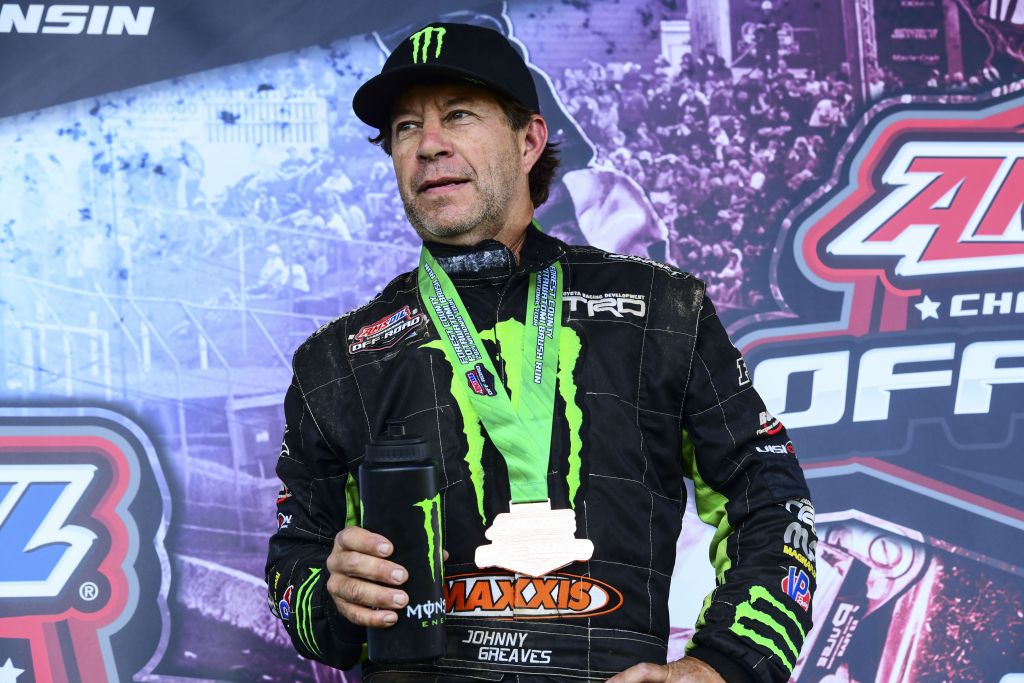
Photo credit: Mike Roth
The Pro 4 landscape in 2021 seems to be as strong as it’s been in recent memory, now that everyone’s racing in the same series again. How does the talent level compare versus what you dealt with in the past?
I definitely have seen the off-road scene go full circle multiple times (laughs). I’m maybe the one guy who’s been around it more than anybody to see all the different changes, good, bad, or ugly. I was there back when it was at the peak, and we had everybody racing under the same umbrella, it’s kind of come back around to that again. Maybe the field isn’t quite as big, just because some people dropped out and weren’t ready to get back in, but the level of talent is definitely there. There are six or seven guys out of that 15-truck field again that are capable of winning.
So it’s definitely gone full circle again, which is really cool. For me, I wish it would have happened three years earlier when I was a little bit more on my game, but I actually feel really good about this year. We’ve got some things sorted, and I’ve got a lot of—I wouldn’t call it test time, but I’ve spent a lot of time with my truck to figure out some things that I wasn’t happy with last year.
We spend so much time in side-by-sides just racing each other through the woods and going down south to tracks in the offseason that it’s definitely helped me get my drive back and sharpen me up again. I’m happy with where it’s going this year with the series and the team, and obviously CJ has really stepped up his game this year. So we’re looking solid!
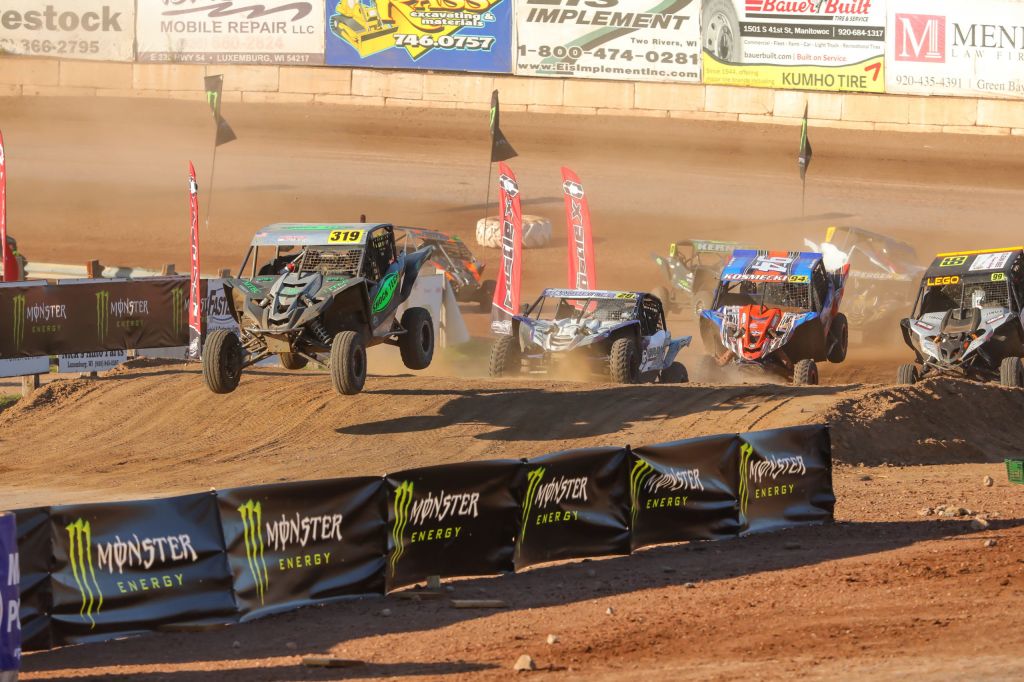
Image via SXS Sports LLC
Speaking of side-by-sides, you’ve got your own series now with SXS Sports and the King of the Elements series that has proven to be really popular with racers and fans alike. No great promotion is born overnight, so what was the journey to putting that series together, and what’s been different about trading in the driver’s seat for the promoter’s chair?
Basically, what got us started was when we got the opportunity through Yamaha for CJ to run one of these. They sent us a couple, we built them into racecars, and they sent us a couple to goof around with, and I started driving them. At first I looked at it and was like, “I’m never going to drive one of those things!” and laughed. But you start driving one, changing it, modifying the suspension and getting it to work better, and what dawned on me is that these things are mini Pro 4s. Obviously they’re much smaller, and slower, but the characteristics are so similar, that it’s like a training tool. You can go do whatever you want with it.
We started doing a lot of different things with them, from going through the woods in the summer to going out on the lakes on the ice in the winter, to going out to snowmobile trails with them. That’s kind of what triggered all of that with SXS Sports and King of the Elements. I don’t know another vehicle that you can take and do all this different stuff with. Even rock crawling and desert racing—if we had some of that around here, I’d incorporate that into the series too. They’re just so capable.
We put on one race just to see what would happen. It was a combination of half asphalt and half dirt short course racing, and we had a huge turnout. I think the very first race we had 110 cars and only three classes. So a light came on that there was a need for this. Every phone call I made, sponsors that I had good relationships with, I told them our plan and they all jumped on board at some level.
All of that went well, so we developed King of the Elements as a three-race series to incorporate those ideas. One ice race, one short course race, and one race on asphalt and dirt. This year, we’re doing a dirt oval, more stock car style and more of a flat track, so we keep changing it up. But it’s cool to see how much everybody loves it. I get so many compliments on the series—all we hear is “I wish you guys would do more races” and “it’s so much fun racing with you guys.”
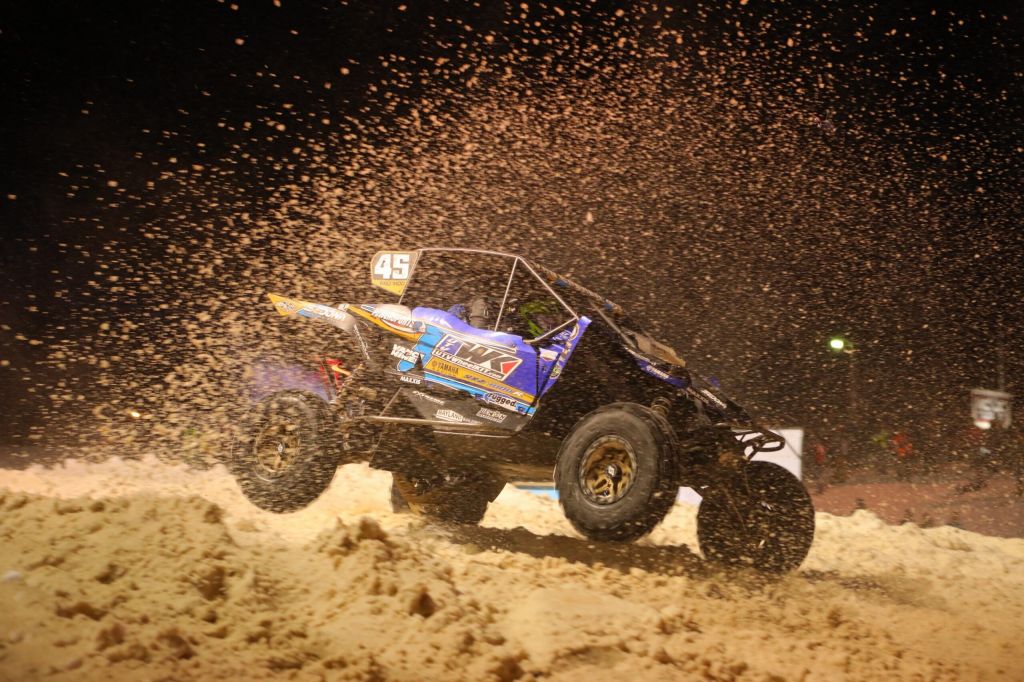
Image via SXS Sports LLC
You don’t see the same guys win that win in short course a lot, where it’s the same one, two, three guys. We get different winners, because there are some guys that are better on the ice, some guys are better on the flat track, some guys are better at short course. It’s really cool to see that. I wish we could do more, but I’ve still gotta go make a living. But it’s a neat thing for us, and it kind of takes care of itself through sponsorship, entry fees, and gate.
One cool story behind it was, when I first decided to do it and went to sponsors talking about it, they said, “we love the side-by-sides, they’re so cool, but are they going to pull a crowd?” We did the first one at a little, tiny track, and we got 1,500 people—more than the place can handle. And I said, “I think people will come and watch this!” You do something that’s unique, and it’s not boring—I try to target it like Supercross does, a three or four hour show so you’re not there all day and getting bored—and now we’re pulling 2,000-4,000 people at our events, which is really cool! They just come to watch side-by-sides. And that’s another milestone. What they said probably couldn’t be done, we made happen, and I’m pretty excited about that.
It’s definitely been awesome to watch. The first stream I got to watch live was the race from Eagle River, and that just looked so cool and so different from everything else out there.
Eagle River was so cool, because it was ice, and we made some snow jumps and kind of a snow section. The weather got so warm that it kind of broke down, but I was grinning from ear to ear the whole time. Everybody was asking, “is this what you had in mind?” I said, “who knows? It’s King of the Elements. You’ve gotta deal with whatever we get!” And all the drivers accept that, and go do it. It’s cool to be able to do that and have everybody jump on board.
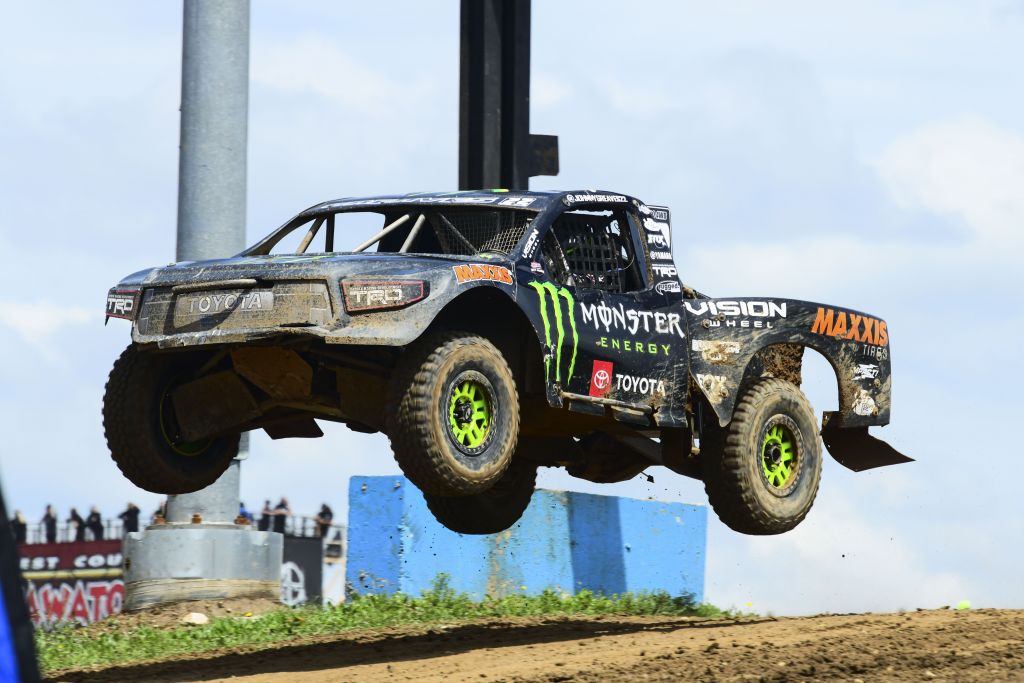
Photo credit: Mike Roth
One of the biggest things you just mentioned in developing SXS Sports was all the existing sponsors of yours that came into develop it. Relationships like those—you just can’t take them for granted. What have you learned about that side of the business that you’d give as advice to someone who’s just starting and wants to have a long career like you’ve had?
The biggest mistake I think I see people make is, they think if they go buy the best equipment and get a fancy trailer and spend all their money, they’re supposed to get a sponsor. The thing I tell everybody is, go find somebody that’s interested in it, has a passion, and figure out how you can give them some sort of return, obviously, but let them be involved. Get them involved in it, and build a relationship first before worrying about building your bankbook. It usually just comes together from that.
I never start off asking for much at all. I let things grow with the relationship, with trust, and that sponsor starts becoming your friend or feeling a part of the team. That’s really what it takes, in my opinion, to carry those sponsorships on for years. They’ve gotta feel like they’re part of it. Not just you sending them race results every weekend, and they look over it, and go “that’s cool.” You have to get them involved, especially if you can show them a return on investment in their business or whatever it is.
I usually start off by saying, “every time I get on a podium, I’ll hit you up,” and we make deals off of that. They’re usually happy with that, because then they’re getting what they paid for no matter what—they’re paying if you get on the podium, and in the past I’ve been pretty good at that! So we start there.
I’m fortunate that I kind of got into the sport when it was just starting to grow, and then I peaked probably the same time that it was probably peaking. I was one of the big names, and we’ve always been able to maintain our level. So our sponsors trust me—they know that we’re not gonna take money and not do our job. There have been times, during COVID for example, I told them “I don’t want to get paid unless we know we’re racing.” They really thought that was cool. It just didn’t seem fair to me—when we’re on the track and doing our jobs, then let’s get caught up, but until then, don’t worry about it.
That’s pretty much how it’s worked out for me, and it’s worked out pretty good.
Turning back to the rest of this Pro 4 season—you’ve already got multiple podiums under your belt this year, but you’ve talked about how tough the field is. What’s it going to take to get back on top of the box?
There are a lot of little pieces to that puzzle. I think it’s going to take a little luck on my end. I’ve got the speed to run with these guys, but what I just don’t have, as good as the guys like CJ, Kyle LeDuc, and Mittag are, is that I used to be able to knock off laps and be within the same tenth every lap no matter what. It’s just harder to put that together. I’ve been working on just trying to calm down and put in my laps, and get my consistency back, and just start picking back up the speed as that all develops.
But I think I’ve got a good shot. I’m actually looking forward to Bark River probably more than anything, because I really run good there and can usually knock off some good laps there. So I’m looking forward to that for sure.
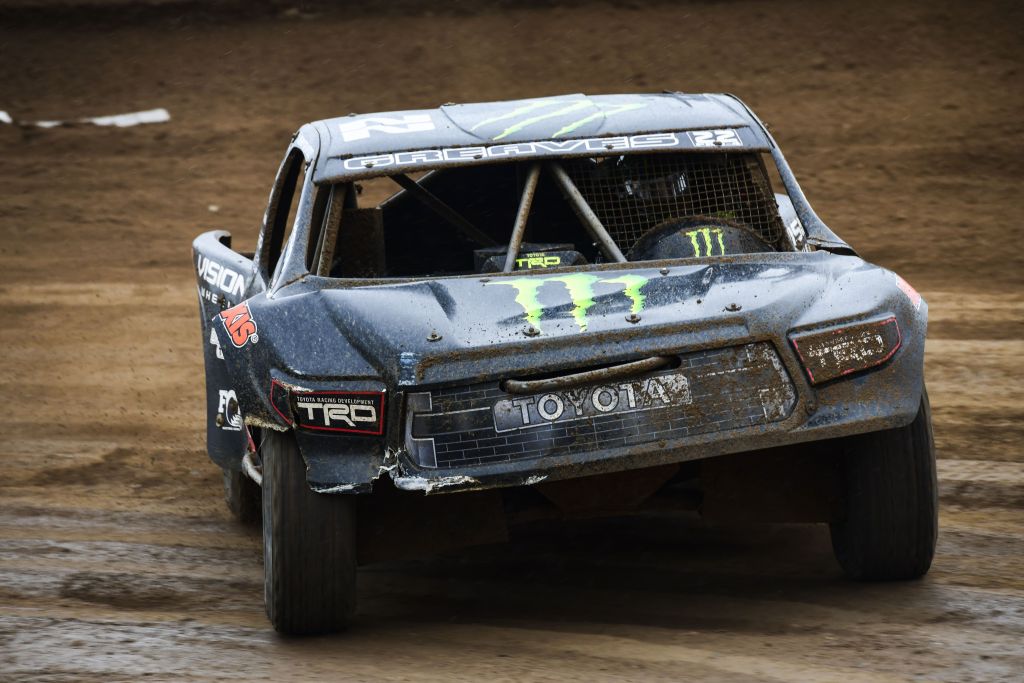
Photo credit: Mike Roth
Finally, looking ahead… you’ve got a lot going on right now, as a driver, team owner, and series promoter. Have you really thought about how you want to map out the next few years?
Boy, that’s a golden question! (laughs) Obviously, I’m looking at continuing racing short course for a few more years. I think I’ve got at least two more years in me where I can be really competitive. When I think I’m not capable of being on the box anymore, that’s going to end it for me, because I don’t want to just go out there and ride around after everything I’ve been through and done. So that’s going to play its own role.
As far as the side-by-side racing and that series goes, I’m pretty excited about that! That might open up some opportunities for me down the road, especially if I retire from racing in the next two or three years. I don’t think that sport is going anywhere anytime soon, it just keeps growing. There are just a lot of irons in the fire now. We did the side-by-side series and it opened my eyes, so to speak, on what we can potentially do in the future.
It may be more than just side-by-side racing. Maybe we’ll be promoters of off-road—I don’t know. I just feel a lot better about getting into something now that we’ve done something like we have for the past few years. You’re not jumping in blind, you’ve got some things figured out, and you know how to handle a lot of it. So there are a lot of question marks in the next two or three years for me, but we’ll be doing something cool, that’s for sure.
Obviously the team will continue, and I’ll continue to be a huge part of that. I’m slowly grooming CJ into starting to handle more parts of that, so if different opportunities pop up for me, maybe I don’t have to be there to set up and tear down and do that stuff anymore (laughs). So we’ll see what happens. But I’m definitely not disappointed that off-road for me may come to end in the next couple of years, because I’m looking forward to doing other things. I’m not bored or sick of it or anything else, but I wouldn’t mind opening some other doors and seeing what pops up.
Follow Johnny Greaves: http://johnnygreaves.com/
Follow SXS Sports: http://sxssportsracing.com/
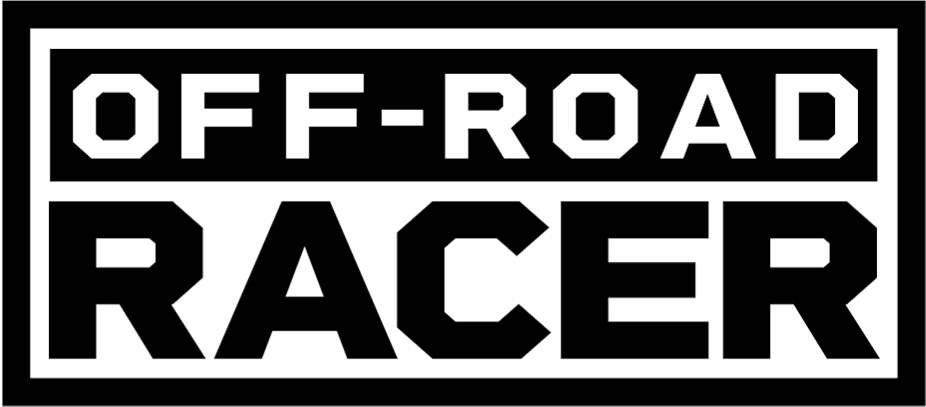
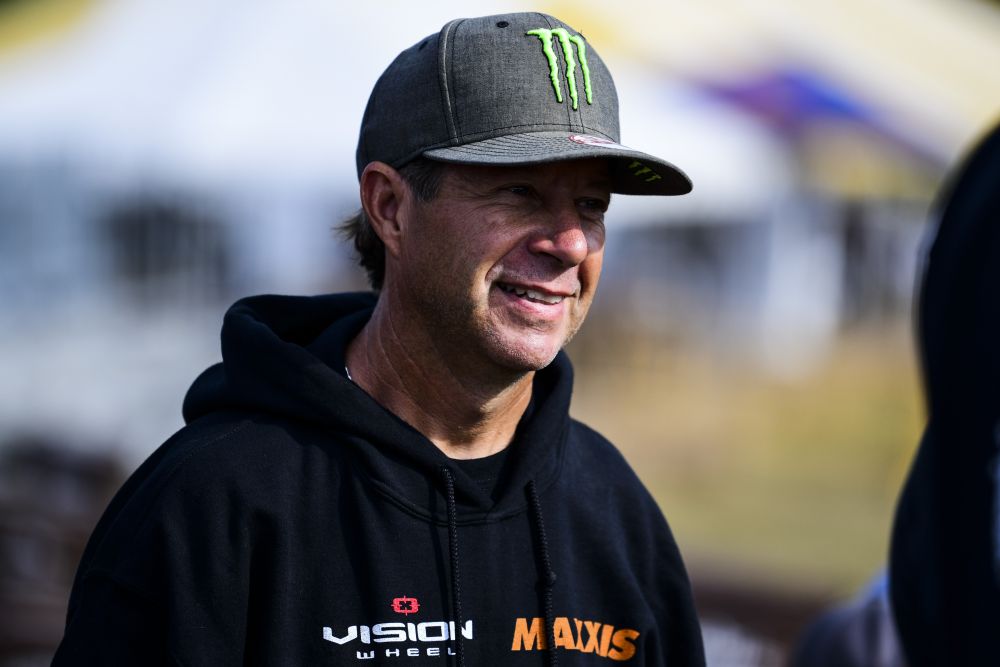

Pingback: โปรแกรมพรีเมียร์ลีก
Pingback: magic boom bars USA
Pingback: auto swiper